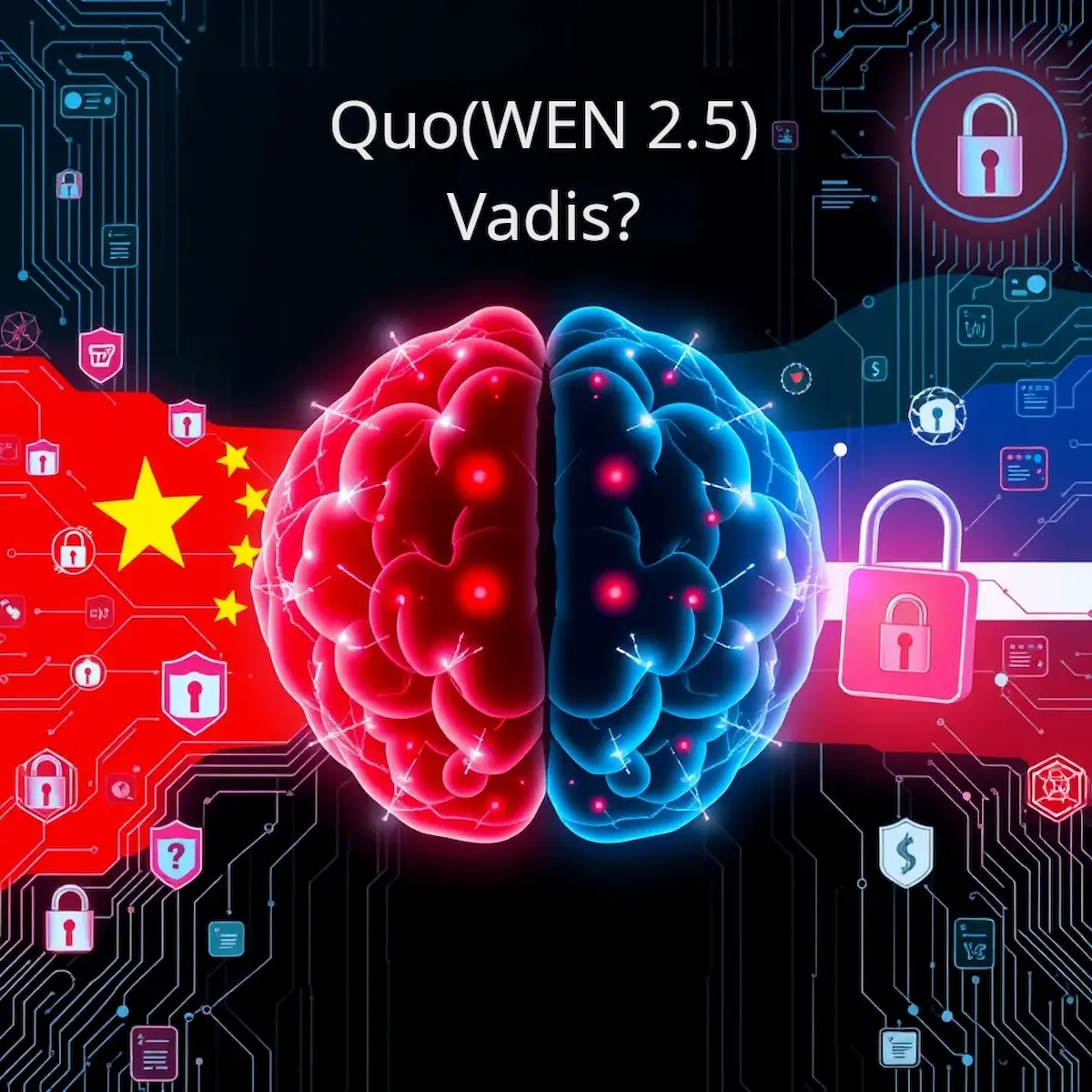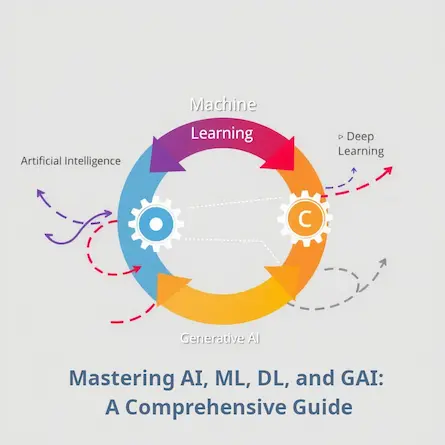
Navigating the Waters of Chinese Open-Source LLMs: Addressing Western Concerns
- Ctrl Man
- AI Technology , Cybersecurity
- 04 Oct, 2024
Navigating the Waters of Chinese Open-Source LLMs: Addressing Western Concerns
In the rapidly evolving landscape of artificial intelligence, Large Language Models (LLMs) have become a cornerstone of innovation. However, the origin of these models can sometimes raise eyebrows, particularly when it comes to Chinese open-source models like Qwen 2.5. As Western LLM users and enthusiasts, it’s crucial to address the concerns surrounding the use of these models in various applications, especially in conservative industries or as coding assistants.
The Dilemma: Security vs. Innovation
Many organizations, particularly those in conservative industries, find themselves at a crossroads. On one hand, they want to leverage cutting-edge AI technologies to enhance their operations. On the other, they face significant concerns about the security implications of using models developed in China.
The Case of Qwen 2.5
Qwen 2.5, a powerful open-source model, presents an attractive option for on-premises deployment, especially when isolated from the internet. However, senior management in many Western companies express reservations about potential trojan threats, remote code execution vulnerabilities, and the implications of model fine-tuning.
Debunking the Myths: Technical Arguments
Model Security: More Than Just Origin
It’s crucial to understand that at their core, LLM weights are just numbers. The process of fine-tuning these models often renders them unrecognizable from their original form. This transformation significantly mitigates concerns about embedded malicious code or backdoors.
The Evolution of Security Measures
While older versions of some models had vulnerabilities related to quantization files, modern LLMs have addressed these issues. The introduction of safetensor formats and improved deployment practices have dramatically reduced the risk of arbitrary code execution.
The Counterarguments: Why Caution Persists
Despite these technical reassurances, many organizations remain hesitant. Some have even abandoned efforts to persuade management, opting instead for models like Llama 3x, which may be perceived as “safer” due to their Western origin.
Defense and Sensitive Applications
For those working in defense or other sensitive sectors, the stakes are even higher. Many face strict restrictions on model usage, regardless of the model’s origin. This caution extends to models from Western companies like Meta, which explicitly prohibit use in military or weapons development contexts.
The Licensing Labyrinth
Many workplaces adhere strictly to permissive licenses like MIT or BSD, further limiting their options. This compliance-first approach can sometimes override technical considerations, even when a model like Qwen 2.5 might offer superior performance.
Striking a Balance: Addressing Concerns While Embracing Innovation
1. Emphasize Security Measures
- Highlight the use of safetensor formats and custom unpicklers with whitelisted imports.
- Stress the importance of continuous monitoring and security audits.
2. Education and Transparency
- Provide comprehensive documentation on the model’s architecture, training process, and security features.
- Offer regular updates and open communication channels for security-related queries.
3. Compliance and Regulation Adherence
- Ensure that the use of any model, regardless of origin, aligns with industry standards and regulations.
- Develop clear guidelines for model usage that address specific concerns in sensitive industries.
4. Explore Hybrid Approaches
- Consider using Chinese open-source models as a foundation, but implement extensive fine-tuning and customization to create a unique, company-specific model.
- This approach can leverage the strengths of models like Qwen 2.5 while addressing concerns about direct usage of a Chinese model.
Leveraging Chinese Open-Source LLMs: Addressing Concerns and Benefits in VSC Environments
As developers increasingly utilize large language models for code generation, the choice of which model to use can significantly impact productivity and security considerations. When using a Chinese open-source Large Language Model (LLM) like Qwen 2.5 as an AI coder assistant under Visual Studio Code (VSC), several concerns might arise:
Security Considerations
Developers are often wary about integrating code generation tools from sources they perceive to be less transparent or having potential security implications. This is particularly true when working with models developed in China, given the geopolitical climate and historical concerns over technology transfer.
Addressing Trojans and Remote Code Execution Vulnerabilities:
- Model Fine-tuning: The process of fine-tuning Qwen 2.5 can significantly alter its original structure. This transformation often results in models that are unrecognizable from their source, mitigating the risk of embedding trojans or other malicious code.
Security Measures in VSC Environments:
- Safeguarded Deployment: By deploying the model on-premises and ensuring it’s isolated from internet access, you can significantly reduce potential security risks. This setup aligns with conservative industries’ requirements for enhanced data protection.
Integration Benefits
Despite initial apprehensions about model origin, leveraging Chinese open-source models like Qwen 2.5 as a coding assistant in VSC environments offers several benefits:
- Enhanced Productivity: The advanced capabilities of these models can significantly speed up development processes by generating high-quality code snippets and suggesting potential solutions to complex problems.
Customization for Specific Needs:
- Hybrid Approaches: By combining the strengths of Chinese LLMs with custom fine-tuning or integration, developers can create tailored AI assistants that align better with their specific coding workflows and preferences. This approach helps in minimizing security concerns while maximizing productivity gains.
Sub-Conclusion
Incorporating a Chinese open-source Large Language Model like Qwen 2.5 as an AI coder assistant under VSC presents both opportunities and challenges for developers, especially those working in conservative industries or focusing on code generation tasks. By addressing specific security considerations, leveraging the model’s enhanced capabilities, and implementing strategic hybrid approaches, organizations can effectively harness these advanced tools while maintaining a high standard of data protection.
Conclusion: A Path Forward
The concerns surrounding the use of Chinese open-source LLMs in Western contexts are valid and deserve serious consideration. However, with proper understanding, security measures, and transparent practices, these powerful tools can be safely and effectively integrated into various applications, including code assistance.
As the AI landscape continues to evolve, it’s crucial for organizations to stay informed, remain adaptable, and prioritize both innovation and security. By addressing concerns head-on and implementing robust safeguards, we can harness the full potential of global AI advancements while maintaining the trust and confidence of all stakeholders.
The future of AI is global, and learning to navigate these waters safely and effectively will be key to staying competitive in an increasingly AI-driven world.





